Drone Laws in India – How to Get Drone License in India – 2021
The Indian government released some laws for the increasing drone technology to enhance the safety of the nation. To know more about the legality of drone flying, read this article.

All DIY hobbyist people are more curious about making drone and flying them. But do you know, you need to register your drone to make it fly. According to the Ministry of Civil Aviation, a flying drone is legal in India.
The DGCA (Director-General of Civil Aviation) declared the country’s first Civil Aviation Requirements (CAR) for drones or RPAs (Remotely Piloted Aircraft) in India on August 27-2018 and to go into effect on December 1, 2018. Most of the people are unaware of the rules and regulations framed by the DGCA.
The intention behind this blog is to understand the legality of the drone operation and how to get a Drone License in India.
Let’s see all these in details,
# 1- Categories of Drone/RPA
DGCA has divided these RPAs into 5 different categories. All these aircraft are allowed with their different set of rules. These categories define the payload capacity of the drone.
- Nano - Less than or equal to 250 grams.
- Micro - Greater than 250 grams and less than or equal to 2 kg.
- Small - Greater than 2 kg and less than or equal to 25 kg.
- Medium - Greater than 25 kg and less than or equal to 150 kg.
- Large - Greater than 150 kg.
# 2 - Registration of the Drone/RPA
All the drone owners need to do the registration of the drone for a Unique Identification Number (UIN).
This requires identifying the device to avoid disturbance in commercial and air traffic operations. But some of the drones don’t need to do it and they are,
- Nano category drone allowed to fly up to 50 feet (15m) AGL in uncontrolled airspace/ enclosed premises for commercial/ R&D purpose.
- Drones operated by NTRO (National Technical Research Organization), ARC (Aviation Research Centre) and Central Intelligence Agencies don’t need UIN.
To register your drone and get the UIN for your device, go to the Digital Sky Platform and folllow the below steps,
- Step 1 - To start the registration procedure, click on Get Started.
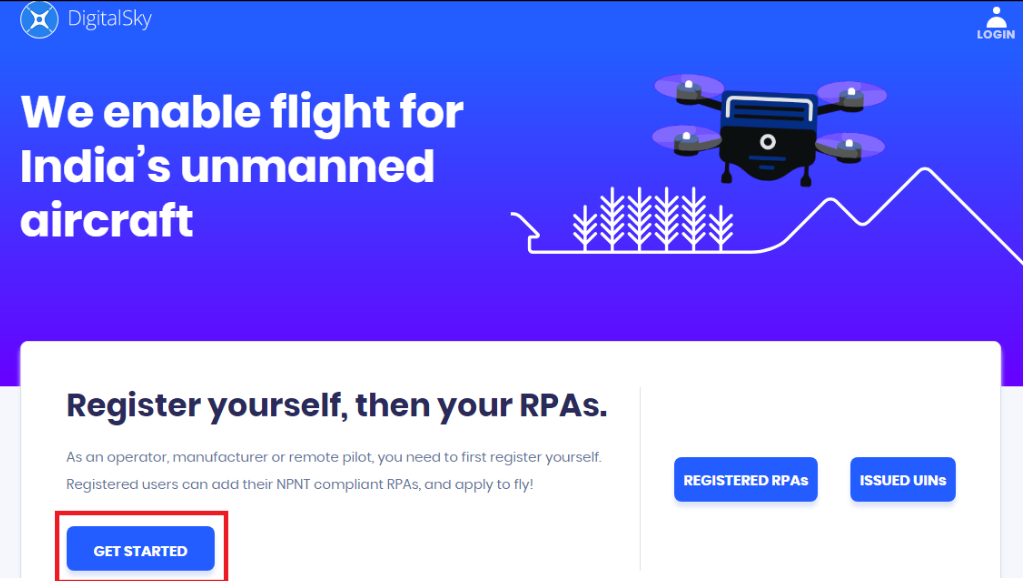
- Step 2 - If the user's drone is over 250 grams, click the link > select over > select the category > select the appropriate sub-category and click on Register
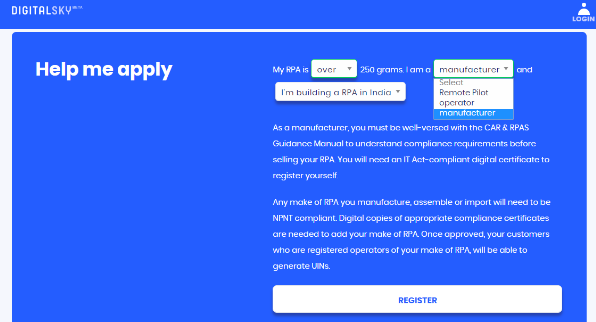
- Step 3 - Selecting the Category of the Pilot, Operator or ManufacturerAfter clicking Register, fill the form with valid credentials and click Sign Up

- Step 4 - After registering, the user will receive a notification on registered mail. Click on the link given in the mail, the user will get the profile of the type of drone.

- Step 5 - After selecting the profile, fill in the required credentials > upload the training certificate (if necessary) > select drone type and submit it.
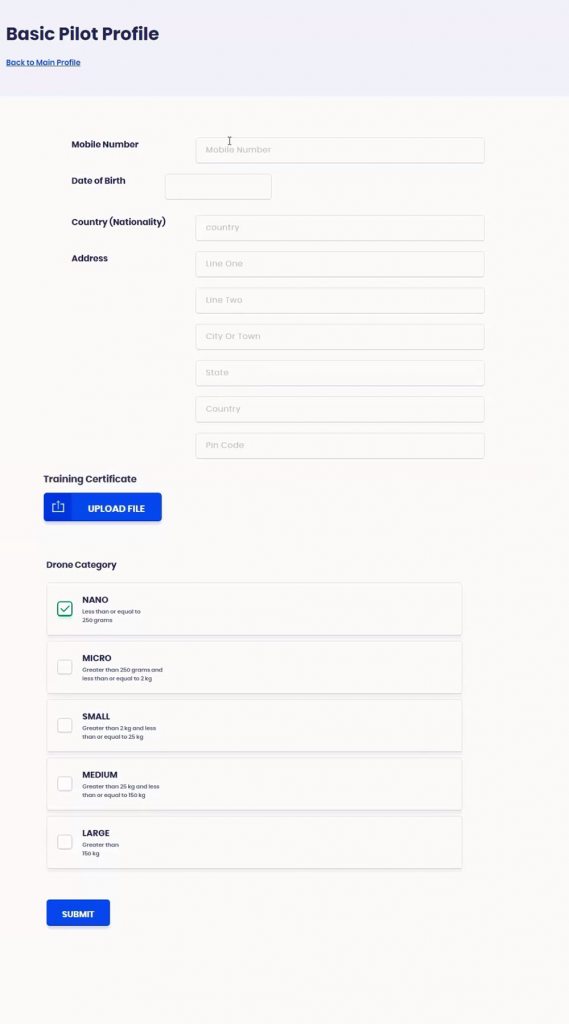
- Step 6 - After proper registration with Digital Sky, the user need to select any of the following options to register the drone:
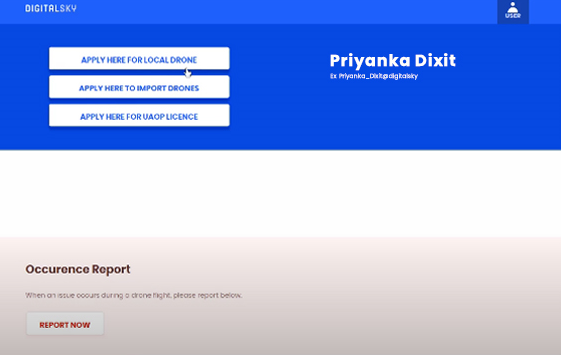
- Step 7 - After that, the system will ask for the below information,
- Name, address and PAN card details
- Drone Type
- Serial number and Model Number
- OEM Certificate (certificate received from manufacturer)
- NPL Letter
- Name, address and nationality of the Manufacturer
- Maximum take-off weight and height
- Details of compatible payload
After filling in the valid credentials, the user needs to pay Rs. 1000 to apply for UIN through https://bharatkosh.gov.in/.
And upload the copy of your Bharat Kosh Payment Receipt to this Registration form.
# 3 - A requirement of a permit and Drone License in India
As per the DGCA guidelines, people who wish to fly a drone require a permit and it is also called the UNMANNED AIRCRAFT OPERATOR PERMIT (UAOP). However, the following entities don’t require the UAOP:
- Nano drone- operating below 50 feet (15m) AGL in uncontrolled airspace.
- Micro drone- operating below 200 feet (60 m) AGL in uncontrolled airspace or enclosed premises for commercial/ R&D purpose.
- Drones operated by NTRO, ARC and Central Intelligence Agencies.
The drone which doesn’t come into above-mentioned categories, need certain documents. Also, they need to fill out certain forms through the Digital Sky Portal to get a permit for drone flying.
# 4 - Documents Required for UIN
To Register your drone on the Digital Sky platform, the below documents are important,
- Required contact details of Owner, at least two out of three valid identity proofs like GSTIN, PAN card, Passport, Driving License or Aadhar Card etc.
- Purpose and base of the flying operation.
- Specifications of Drone/RPA.
- Maintenance guidelines for UAS from the manufacturer
- Need security clearance from the Ministry of Home Affairs, Government of India.
# 5 - Requirements For Drone Operator
CAR 1.0 specifies certain requirements for a drone operator/remote pilot to ensure the overall safety of people and property,
- Every drone operator has to be 18 years of age.
- The drone operator should have passed up to a minimum of class 10 in English.
- Also, the drone operator should undergo a ground training program at any Flying Training Organization (FTO), approved by DGCA.
# 6 - No Permission - No Take-Off
NPNT or ‘No Permission No Take-off’ is a new concept controlling RPA or any unmanned aerial vehicle (UAV) usage and traffic. This is released by DGCA India.
The drone user has to register himself with an UAOP and the drone with UIN. Then install a mobile app to get permission for each drone flying.
No drone (Except Nano drone) will be able to fly without specifying to the DGCA its:
- Intended flight envelope
- Total flight time
- User credentials
This NPNT concept is announced all over the world. In Canada, they have made their ‘Safety Assured Flight Envelope’ (SAFE).
How NPNT works?
- Install the Digital Sky App provided by DGCA.
- Submit the pilot/user registration number with all the details.
- Submit drone UIN number with all the details.
- Do permission request before flying.
- All the details like UIN, UAOP and the current location will transmit to the server.
- The server checks whether it’s in the green zone, yellow zone or red zone.
- Verify the other exceptional entries for no permission and the UIN, UAOP validity.
# 7 - Flying Restrictions
The RPA flying restrictions vary with the state with different circumstances. The Digital Sky platform crosscheck these restrictions before flying the drone. Let's see some of them,
- Drones are restricted within a distance of 5 km from the perimeter of any domestic or private airports.
- The drone is prohibited in restricted and Danger Areas including TRA, and TSA, as notified in AIP.
- Drones can’t fly within 25km from the international border which includes Line of Control (LoC), Line of Actual Control (LAC) and Actual Ground Position Line (AGPL).
- Drones can’t fly beyond 500 m (horizontal) into the sea.
- Also, it is restricted within 3 km from the perimeter of military installations/where military activities/ exercises are being carried.
- RPA’s can’t fly within a 5 km radius which has tightened security like near Vijay Chowk in Delhi.
- Drones are restricted within 3 km from a radius of the State Secretariat Complex in State Capitals. Also, in over eco-sensitive zones around National Parks and Wildlife Sanctuaries notified by the Ministry of Environment, Forests and Climate Change (MOEFCC).
# 8 - Penalty on Violation
If anyone crosses these regulations, they have a risk of suspension of the UIN/UAOP.
Also, it will attract penal action under relevant IPC sections 287, 336, 337, 338 under Aircraft Act 194 and Aircraft Rules.
The Government is continuously working towards technologies to restrict drones that are not registered.
Final Words
Hope this blog helps you to understand the importance of the rules and regulations of drone flying and how to get a Drone License in India. The use of drones in a legal way is a step in the right direction. I hope, everyone will follow this promptly.
The information provided in this blog is correct, however, you can refer to these CAR rules issued by the DGCA.






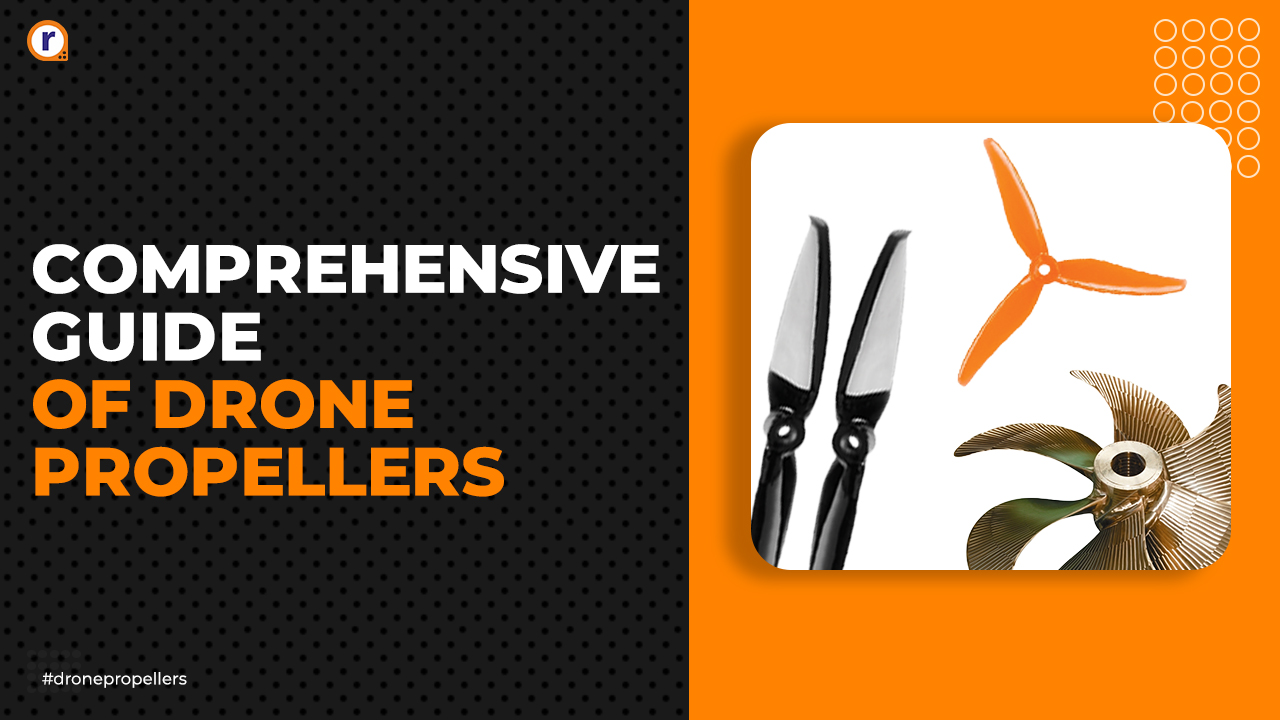
Very useful